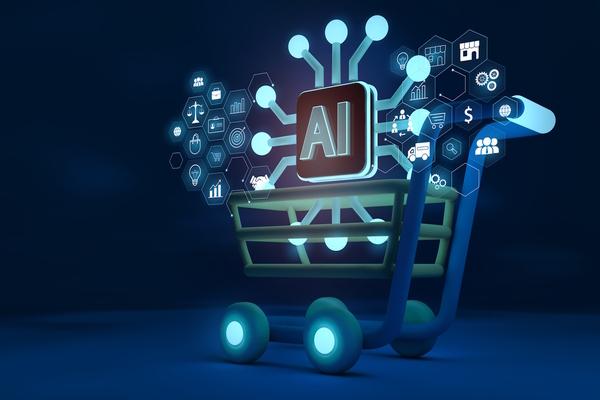Edge computing: from data to action

Shahid Ahmed at NTT DATA explains how organisations can future-proof their operations with edge computing
No question about it: The technology of the year was AI. Across all verticals, enterprises recognised the potential of new AI applications. Generative (Gen) AI especially garnered attention. Organisations are now racing to test its astonishing power, explore deployment scenarios, and model its impact.
How exactly does Gen AI impact operations? Does it strain existing IT infrastructure? How are the data generated, collected, and processed? As enterprises investigate this sensation and continue to transform themselves digitally, they can find answers in the capabilities of edge computing.
Edge computing: definition and drivers
Computing at the network edge is not new. But we are far beyond the cache servers of early content distribution networks (CDNs). Exponentially faster compute and transport have changed IT across the board, including at edge sites positioned close to end users.
Today the edge is multi-faceted: it can include cloud processing; applications optimised for low latency; and devices that collect, assess, and distribute data from IoT sensors.
Connectivity is key. In a study of 621 current enterprise investors in edge solutions spanning five major industries, close to half of the respondents classified edge investments as part of network connectivity. This perspective makes sense given the dependency of edge-generated outcomes on the wide area network (WAN).
What are those outcomes? Functional triggers for edge investment vary across industries. And while AI is the flavour of the month, the above-mentioned study (conducted by Omdia and sponsored by NTT and Intel) revealed that industries have their own top drivers and runners-up, including but not limited to AI:
- Real-time data access. Financial services, transport and logistics, all industries that depend upon networked endpoints attuned to customers, ranked this first, with Automation and AI in second.
- Automation and AI. The leading driver for energy and utilities firms, which must handle dynamic shifts in demand amidst regulatory and environmental constraints; they put real-time data in second place.
- Operational efficiency. Manufacturing firms, which aim to be just-in-time organisations, ranked this as the top priority, followed by data security.
- Managing IoT device growth. Medical organisations, which have rapidly digitised and are aiming for improved outcomes through better prediction, said this was the top challenge, closely followed by Automation and AI.
Toward Industry 4.0
Early wins for the edge, according to the Omdia study, to date include improvements in supply-chain efficiency, ESG compliance, and customer experience. But it can do more. With cognitive analytics, IoT tracking and automation, and high-performance number crunching as today’s leading apps, the edge is positioned to be transformative. It can help drive Industry 4.0.
The emerging 4.0 model denotes industrial changes associated with an increased use of AI, advanced robotics, automation, and data. It’s where edge computing can shine through cost-effective data extraction, aggregation, and intelligent use of actionable insights at scale.
Localised processing bakes in efficiencies by eliminating the need to funnel data to distant clouds. Early adopters have realised these benefits in many industries. We’ll point to two.
In manufacturing, it’s the story of a traditional plant becoming a smart factory, leveraging IoT, edge compute, and predictive analytics. We’ve seen unique use cases, such as: machine vision to ensure product quality; unfettered connectivity for improved management of autonomous ground vehicles across the factory floor; and augmented reality solutions that enable remote-worker support for enhanced equipment management.
In healthcare, it’s certainly about IoT devices. Keeping them secure but accessible; and patient data confidential but available to the right staff. But there’s more: complicated edge compute-enabled networks that encompass multiple medical machines, patient sensors, and healthcare applications. It’s the breakthroughs in automation, management, and information processing systems that are driving this sector toward Healthcare 4.0.
Collaboration at the Edge
Journeying to the future is rarely a solo exercise. As noted earlier, organisations that recognise edge compute’s dependency on networking classify these investments accordingly. Fiber and wireless connectivity and upgrades are not do-it-yourself projects; they typically require a partner.
Automating processes, deploying AI, gaining real-time access to data – all top reasons to invest in edge computing – are not trivial exercises. They call for high levels of IT orchestration, operational performance, and security. That’s why many enterprises turn to hosted sites and lean on managed service providers when executing their edge computing strategies.
Before partnering up, however, businesses looking to leverage edge computing must first think about their organisation and structure. Identify the triggers, own the investment, unite business and IT teams behind shared goals. That’s how to begin ensuring edge-driven success.
Shahid Ahmed is EVP New Ventures and Innovation at NTT DATA
Main image courtesy of iStockPhoto.com

Business Reporter Team
Most Viewed
Winston House, 3rd Floor, Units 306-309, 2-4 Dollis Park, London, N3 1HF
23-29 Hendon Lane, London, N3 1RT
020 8349 4363
© 2025, Lyonsdown Limited. Business Reporter® is a registered trademark of Lyonsdown Ltd. VAT registration number: 830519543





